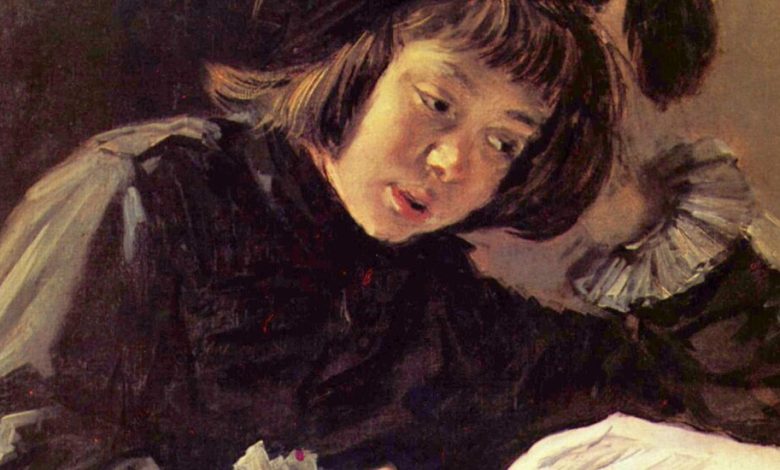The Lonely Librarian, the Color of Melancholy, and Tangerines


“Lezende jongen,” by Frans Hals
Molly Young is on leave for the next several months. In her absence, colleagues from the Book Review will pick up the recommendation torch and appear in your inbox every two Saturdays.
Dear readers,
Recommending can be tricky. The right suggestion can make people feel seen and understood and maybe even help them to understand you better, too. A bad one, on the other hand, is like an unsuccessful romantic setup: This is what you think I’m into? (I often have this reaction when streaming services try to recommend cozy mysteries when obviously what I’m looking for is something gritty in a town full of secrets and lies and an improbably high murder rate involving a detective with personal demons. Somehow something almost right is more insulting.) But here’s what I can tell you about these somewhat moody books: I love them. I’d read them again. But it’s not a setup — I promise.
—Sadie Stein
(P.S.: My colleagues in the Book Review also send out a newsletter featuring all the latest news and reviews from the literary world — if you like Read Like the Wind, you might enjoy that letter, too.)
“A Girl in Winter,”by Philip Larkin
Fiction, 1947
If you’re lucky, you have one friend in your life who gives impeccable recommendations. I don’t just mean someone with good taste — although that’s a requisite — but also a real understanding of what you’ll like, or even need. For me, that’s my old friend Tom, who first introduced me to Elizabeth von Arnim, Alston Anderson, Denton Welch and, perhaps dearest of all, this tender novel, a striking contrast to the acerbic (even dyspeptic) work of the older Larkin.
Katherine Lind is a young European woman working in a small library in a grim provincial town in wartime England. Deeply lonely, Katherine is moved to contact her old pen pal, Robin, who’s home on leave; the text cuts between memories of a sunny interwar visit to Robin’s family and the cold realities of the present. We never learn Katherine’s nationality or why she is in England — although we may suspect — and, indeed, much of the book is elliptical. What is clear is the sense of solitude: As haunting a portrait of isolation, physical and emotional, as I have ever read. And yet, this is not a depressing book; its beauty and humanity will make you feel better for having read it.
Read if you like: Clare Keegan, Wong Kar-wai’s “In the Mood for Love,” changeable weather
Available from: Used-book dealers or well-stocked libraries
“On Being Blue,”by William Gass
Nonfiction, 1976
Arguably the most accessible of the sometimes-obscure Gass’s works, this book-length essay is, in a sense, the postmodern inquiry into the state of melancholy that the title suggests. But it’s far more; Gass expounds on the history and linguistics of the color, its mythological and artistic significance, and … well, blue stuff. Among subjects covered: “Blue pencils, blue noses, blue movies, laws, blue legs and stockings, the language of birds, bees and flowers as sung by longshoremen, that lead-like look the skin has when affected by cold, contusion, sickness, fear; the rotten rum or gin they call blue ruin and the blue devils of its delirium.”
As he explains it, of all the colors, this one “is therefore most suitable as the color of interior life. Whether slick light sharp high bright thin quick sour new and cool or low deep sweet thick dark soft slow smooth heavy old and warm: Blue moves easily among them all, and all profoundly qualify our states of feeling.”
Read if you like: Leonard Michaels, litanies, Miles Davis’s “Kind of Blue,” Blue: The Tatter Textile Library (well worth a visit if one is in Brooklyn)
Available from: New York Review Books
Why don’t you …
-
Read an ARMCHAIR COOKBOOK? Margarita Carrillo Arronte’s Mexico: The Cookbook is an instant classic, both for its prose and its utility, but lately my escapism has taken the form of her latest, The Mexican Vegetarian Cookbook, which will usher in spring either in spirit or fact. Even the cover is a breath of fresh air.
-
Visit the BAD FORM review, if only for Harshita Lalwani’s essay “Are Second Chance Romances as Polarizing as Marmite?” Discuss.
-
Eat CITRUS à la M.F.K. Fisher? “In the morning, in the soft sultry chamber,” she writes in “Serve It Forth,” “sit in the window peeling tangerines, three or four. Peel them gently; do not bruise them. … Separate each plump little pregnant crescent. … Take yesterday’s paper … and spread it on top of the radiator. … After you have put the pieces of tangerine on the paper on the hot radiator, it is best to forget about them. … On the radiator the sections of tangerine have grown even plumper, hot and full. You carry them to the window, pull it open and leave them for a few minutes on the packed snow of the sill. They are ready.”
Thank you for being a subscriber
Plunge further into books at The New York Times or reviews by Molly Young.
If you’re enjoying what you’re reading, please consider recommending it to others. They can sign up here. Browse all of our subscriber-only newsletters here.
Friendly reminder: check your local library for books! Many libraries allow you to reserve copies online. Send newsletter feedback to [email protected].